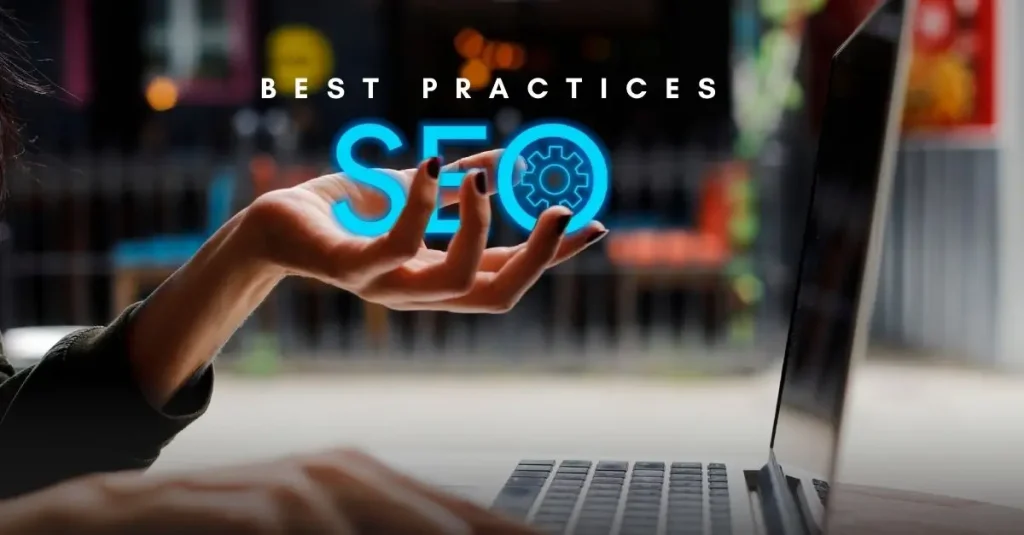If you are serious about improving your website’s search rankings, getting more organic traffic, and ensuring your content appears on Google Discover, then you must understand the best SEO practices. SEO is not just about adding keywords; it’s a combination of technical improvements, high-quality content, and user experience optimization. Today, I am going to explain how SEO works, how it helps your website gain visibility, and the exact steps you need to follow to achieve long-term success.
The Power of a Unique Headline for Google Discover
One of the most effective ways to get noticed on Google Discover is by crafting an engaging and unique headline. Unlike traditional search results, where users actively search for something, Google Discover shows content based on user interests. That means your title needs to be compelling enough to make someone click without searching for it.
A good Google Discover headline should:
- Evoke curiosity without being misleading.
- Use power words that trigger emotions.
- Be concise yet informative.
- Include relevant keywords naturally.
For example, instead of writing “Best SEO Tips for 2025”, a better title would be “Unlock Google’s SEO Secrets: 20 Proven Tips to Skyrocket Your Rankings”. This type of headline grabs attention and increases click-through rates.
20 Essential SEO Practices You Must Follow
SEO is a broad topic, but if you follow these 20 key strategies, your website will perform significantly better in search results. Search engine optimization is not just about ranking higher—it’s about creating a better experience for users, ensuring your website is valuable, and making your content easy to discover. A well-optimized website drives more traffic, retains visitors longer, and ultimately converts them into loyal followers or customers.
These 20 essential SEO practices cover every aspect of search optimization, from on-page enhancements to off-page strategies. They include technical fixes, content structuring, user engagement improvements, and authority-building methods. By implementing these best practices, you will not only see an increase in search rankings but also experience higher user satisfaction and engagement, which are important factors for long-term online success.
1. Optimized Title Tags
Title tags are one of the most important elements of on-page SEO. They serve as the clickable headline in search engine results, influencing both rankings and user engagement. A well-optimized title tag can improve your visibility and increase your click-through rate (CTR). Google uses title tags to determine the main topic of a page, making them essential for SEO success.
- Be under 60 characters to display properly in search results.
- Include your main keyword naturally.
- Be compelling enough to make users click.
2. Meta Descriptions
Meta descriptions provide a brief summary of a page’s content and appear below the title tag in search results. While they don’t directly impact rankings, they significantly influence CTR by giving users a preview of what to expect. A well-crafted meta description can make your link stand out among competitors.
- Should be around 150-160 characters.
- Must include relevant keywords.
- Should provide a clear summary of the page’s content.
3. Header Tags (H1, H2, H3, etc.)
Header tags improve readability and help search engines understand content structure. The H1 tag acts as the main title, while H2, H3, and lower-level headers organize the subtopics. Proper use of headers enhances user experience and keyword distribution.
- The H1 tag should be used only once per page and must include your main keyword.
- H2 and H3 tags should break down content into sections.
- Proper use of header tags improves SEO and user engagement.
4. Keyword Research & Placement
Effective keyword research is the foundation of a successful SEO strategy. Using the right keywords helps attract the right audience. Keywords should be placed naturally throughout the content, titles, headers, and meta descriptions without overstuffing.
- Choosing the right keywords based on user intent.
- Avoiding keyword stuffing (which can hurt rankings).
- Placing keywords naturally in titles, headers, and body text.
5. Image Optimization
Images make content more engaging, but they can also slow down page speed if not optimized correctly. Search engines rely on alt text and file names to understand images, making optimization essential for ranking in image search results.
- Using descriptive file names (e.g., seo-best-practices.jpg instead of IMG001.jpg).
- Adding alt text with relevant keywords.
- Compressing images for faster page speed.
6. Internal Linking
Internal links connect different pages on your website, improving navigation and distributing link authority. They help search engines understand site structure and keep visitors engaged longer.
- Improve navigation and user experience.
- Pass link equity to important pages.
- Reduce bounce rates by keeping visitors engaged.
7. External Linking
Linking to authoritative external sources adds credibility and improves trustworthiness. High-quality outbound links show Google that your content is well-researched and valuable.
- Only link to trustworthy sources.
- Use a mix of do-follow and no-follow links.
8. Content Length & Quality
Long-form content tends to perform better in search rankings. However, quality is more important than quantity. Engaging, well-researched content keeps users on the page longer, reducing bounce rates and increasing dwell time.
- At least 1,000 words for in-depth topics.
- Well-researched and fact-checked information.
- Easy-to-read formatting with bullet points and short paragraphs.
9. URL Structure
A clean URL structure helps both search engines and users understand the page content. Short, descriptive URLs improve SEO and user experience.
- Keep URLs short and descriptive.
- Use hyphens instead of underscores.
- Avoid unnecessary parameters and numbers.
10. Mobile-Friendliness
With mobile-first indexing, websites must be fully optimized for mobile devices. A mobile-friendly site ensures a seamless user experience across all screen sizes.
- Fast loading speeds on mobile.
- A clean, user-friendly design.
- No intrusive pop-ups.
11. Page Speed Optimization
Page speed is an important ranking factor, and slow-loading pages lead to higher bounce rates. Optimizing your website’s speed improves user experience and enhances search engine rankings. Google’s Core Web Vitals emphasize fast-loading, interactive, and stable pages.
- Use a content delivery network (CDN) to load pages faster.
- Minimize HTTP requests by reducing unnecessary scripts and styles.
- Optimize images and enable browser caching.
12. Schema Markup
Schema markup helps search engines understand your content better, leading to rich snippets in search results. These enhanced search results improve click-through rates and user engagement.
- Implement structured data for articles, recipes, products, and reviews.
- Use Google’s Structured Data Testing Tool to validate markup.
- Enhance your visibility with FAQ schema and breadcrumbs.
13. Secure Website (HTTPS)
Google prioritizes secure websites with HTTPS over HTTP. Having an SSL certificate ensures encrypted data transfer, boosting both security and SEO rankings.
- Install an SSL certificate and migrate to HTTPS.
- Update internal links to reflect the HTTPS protocol.
- Ensure all resources (images, scripts) load securely.
14. User Experience (UX) and Engagement
Google values a great user experience, which includes ease of navigation, readability, and mobile usability. A user-friendly site retains visitors and reduces bounce rates.
- Improve site structure with clear navigation menus.
- Use readable fonts and contrast for better accessibility.
- Reduce intrusive ads and pop-ups.
15. Social Media Integration
While social signals don’t directly impact rankings, they drive traffic and engagement, helping content gain visibility. Social sharing can also generate backlinks over time.
- Encourage sharing with social media buttons.
- Promote content on platforms like Twitter, Facebook, and LinkedIn.
- Engage with users to boost interactions and brand presence.
16. Backlink Building
High-quality backlinks signal authority to search engines, improving rankings. Focus on earning relevant, authoritative links rather than spammy backlinks.
- Guest post on reputable sites in your niche.
- Create shareable, high-value content.
- Avoid black-hat SEO tactics like buying links.
17. Voice Search Optimization
With the rise of smart assistants like Alexa and Siri, optimizing for voice search is essential. People use conversational and question-based queries when searching by voice.
- Use natural language and long-tail keywords.
- Optimize for local searches and featured snippets.
- Ensure content answers common user questions directly.
18. Crawlability & Indexing
Search engines must be able to crawl and index your website efficiently. If they can’t access your pages, they won’t appear in search results.
- Create and submit an XML sitemap to Google Search Console.
- Use robots.txt to control search engine crawling.
- Fix broken links and eliminate duplicate content.
19. Regular Content Updates
Fresh and updated content keeps your site relevant. Google favors websites that frequently update their pages with new information.
- Refresh old blog posts with new statistics and insights.
- Add new sections to evergreen content.
- Keep content aligned with current search trends.
20. Monitoring & Analytics
SEO requires continuous tracking and adjustments. Without data analysis, you won’t know what’s working and what needs improvement.
- Use Google Analytics to track traffic, user behavior, and conversions.
- Monitor search performance through Google Search Console.
- Adjust SEO strategies based on performance metrics.
By following these 20 essential SEO practices, you’ll improve your site’s visibility, user experience, and rankings. SEO is a long-term game, so keep refining your approach and stay updated with algorithm changes!.
SEO is an Ongoing Process
SEO is not a one-time task; it requires constant monitoring and updating. Use tools like Google Analytics and Search Console to track performance, identify issues, and refine your strategy. By following these 20 best practices, your website will not only rank higher but also attract more engaged visitors. Keep testing, keep learning, and success will follow!





